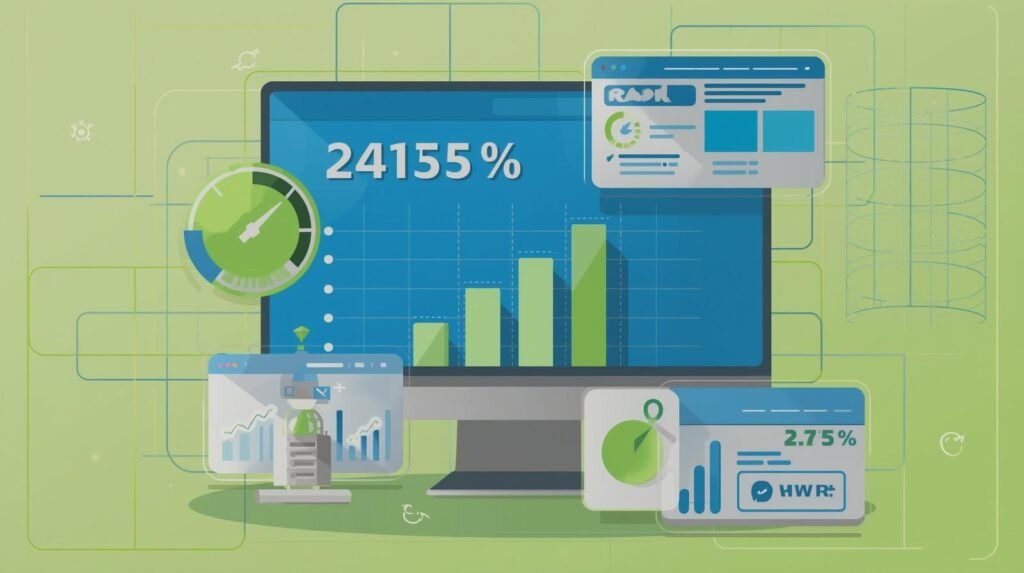Introduction: Why Site Speed Optimisation Services Matter in 2025
Imagine walking into a store and waiting 10 seconds before the doors open. Frustrating, right? Online, those 10 seconds are enough to make most people abandon your site and click on a competitor instead. That’s why site speed optimisation services are no longer optional—they’re mission-critical.
Google has made it clear: website speed is a ranking factor. Beyond search engines, speed shapes user experience, bounce rates, and conversions. Studies show that even a one-second delay in page load can reduce conversions by 7%. For eCommerce sites, that’s potentially thousands—or millions—of pounds or dollars lost.
In 2025, speed optimisation is not just about trimming code. It’s about aligning your website with Core Web Vitals, the set of performance metrics Google uses to judge user experience. Businesses that fail to optimize are at a competitive disadvantage, no matter how beautiful their designs or how persuasive their content is.
In this guide, we’ll cover:
-
What site speed optimisation services involve.
-
Why they’re crucial for SEO and business growth.
-
Key techniques professionals use.
-
Tools that power performance audits.
-
Common issues slowing websites down.
-
How to choose the right provider.
-
FAQs to clarify the process.
By the end, you’ll understand how investing in speed optimisation services delivers measurable returns and future-proofs your website against algorithm changes.
What Are Site Speed Optimisation Services?
Site speed optimisation services are professional solutions aimed at making websites load faster, smoother, and more reliably across all devices. Unlike surface-level tweaks, they go deep into the technical structure, coding, and server performance of your website.
Core Elements of Speed Optimisation
-
Performance Audits
-
Using tools like Google PageSpeed Insights, GTMetrix, or Lighthouse to benchmark performance.
-
Reviewing Core Web Vitals (Largest Contentful Paint, First Input Delay, Cumulative Layout Shift).
-
-
Server & Hosting Optimisation
-
Switching to faster hosting.
-
Using dedicated servers, CDNs (Content Delivery Networks), or cloud solutions.
-
-
Code Optimisation
-
Minifying CSS, JavaScript, and HTML.
-
Removing render-blocking scripts.
-
Leveraging asynchronous loading.
-
-
Image & Media Optimisation
-
Compressing images without losing quality.
-
Using next-gen formats like WebP or AVIF.
-
Implementing lazy loading.
-
-
Caching Strategies
-
Browser caching for static resources.
-
Server-side caching for faster responses.
-
-
Database Optimisation
-
Cleaning up unused tables and queries.
-
Indexing and structuring data for faster retrieval.
-
-
Mobile Performance
-
Responsive design checks.
-
Reducing heavy scripts for mobile.
-
-
Third-Party Script Management
-
Optimising or removing slow plugins, widgets, or trackers.
-
Deliverables of Speed Services
-
Detailed performance reports.
-
Recommendations with priorities (critical vs. minor fixes).
-
Ongoing monitoring to maintain speed.
Put simply, these services make your website leaner, faster, and more reliable—without sacrificing design or content.
Benefits of Site Speed Optimisation Services
1. Improved SEO Rankings
Google prioritises fast-loading sites. Speed directly affects crawl rates and Core Web Vitals, meaning faster sites earn higher visibility.
2. Higher Conversion Rates
Speed influences trust. Users equate a fast site with professionalism. Studies show even a one-second improvement in speed can lift conversions by 10–20%.
3. Lower Bounce Rates
A slow site drives users away. Optimisation reduces bounce rates and keeps visitors exploring your pages.
4. Better Mobile Experience
Mobile accounts for more than 60% of web traffic. Faster mobile performance equals better engagement and retention.
5. Increased Revenue
From eCommerce stores to B2B service providers, faster websites generate more sales inquiries, purchases, and sign-ups.
6. Competitive Advantage
If your competitors are slow, speed becomes your differentiator. Customers will naturally gravitate toward the smoother experience.
For businesses in 2025, speed optimisation is not just an upgrade—it’s a growth engine.
Key Techniques in Site Speed Optimisation
Let’s dive into the most impactful strategies professionals use.
Server & Hosting Improvements
-
Upgrading to cloud hosting or a VPS (Virtual Private Server).
-
Adding a CDN to distribute content globally.
-
Using HTTP/3 for faster connections.
Front-End Optimisation
-
Minify and bundle code to reduce size.
-
Implement lazy loading for images and videos.
-
Use critical CSS to prioritise above-the-fold content.
Image Compression
-
Replace PNGs and JPEGs with WebP or AVIF.
-
Serve images based on device type and resolution.
Caching Solutions
-
Use Redis or Varnish for server-side caching.
-
Apply browser caching rules via .htaccess.
Database Cleanups
-
Delete post revisions, spam comments, and unused plugins.
-
Optimize MySQL tables for faster queries.
Monitoring & Maintenance
-
Ongoing audits to catch new slowdowns.
-
Automated alerts for performance drops.
These technical tweaks ensure lasting performance rather than one-time improvements.

Tools Used in Site Speed Optimisation Services
Professional services rely on a mix of free and premium tools:
-
Google PageSpeed Insights – Core Web Vitals scoring.
-
GTMetrix – Detailed performance diagnostics.
-
Lighthouse – In-depth speed and UX analysis.
-
Pingdom Tools – Load times across locations.
-
WebPageTest – Waterfall charts for script analysis.
-
Cloudflare – CDN and caching solutions.
-
NitroPack – Automated performance optimisation plugin.
Agencies combine these tools with expertise to implement practical, lasting fixes.
Common Issues Slowing Down Websites
-
Oversized, uncompressed images.
-
Too many plugins or scripts.
-
Bloated code with inline CSS or JS.
-
Shared hosting with limited bandwidth.
-
Redirect chains and loops.
-
Render-blocking resources.
-
Poor caching configurations.
-
Heavy third-party ads or trackers.
Without a professional service, these issues often go unnoticed—until rankings and revenue start dropping.
Choosing the Right Site Speed Optimisation Service Provider
-
What to Look For
-
Experience & Case Studies: Ask for before-and-after results.
-
Custom Strategies: Avoid one-size-fits-all solutions.
-
Transparency: Providers should explain fixes in plain English.
-
Ongoing Support: Speed maintenance, not just one-off fixes.
Red Flags
-
Agencies promising “instant 100% scores.”
-
Lack of reporting or unclear deliverables.
-
Over-reliance on plugins instead of real optimisation.
Pricing Overview (2025)
-
Small sites (up to 20 pages): £500–£1,500.
-
Medium sites (20–100 pages): £1,500–£3,000.
-
Large eCommerce/enterprise sites: £3,000–£10,000+.
A solid investment compared to the cost of lost traffic and revenue from poor performance.
-
Conclusion: Speed as a Business Growth Engine
In 2025, speed is the backbone of online success. A fast site isn’t just about keeping visitors happy—it’s about driving higher rankings, stronger conversions, and more revenue.
Investing in site speed optimisation services ensures your website loads quickly, meets Core Web Vitals standards, and gives you a competitive advantage.
The bottom line: if your website is slow, your business growth is slow. Make speed optimisation your priority and watch the difference it makes.
FAQ
Most frequent questions and answers
Small sites: 1–2 weeks. Larger sites: 4–6 weeks.
No. Optimisation makes your site faster without compromising the look or feel.
Speed is one of many ranking factors, but it strongly influences Core Web Vitals and user engagement.
Basic fixes like image compression can be DIY, but technical improvements usually require expert help contact Digital Robin.
At least twice a year, and after major design or content changes.
Also, read: –
- Digital Marketing Agency: Expectations vs. Reality
- What are SEO Services and Why Do they Matter?
- Why We Love Google Ads service (And You Should, Too!)
- The Next Big Thing in Digital Marketing Services
- Getting the most out of your Web Design Company UK
- Why Nobody Cares About Domain Name Search
- Meet the Steve Jobs of the Web Design Company


